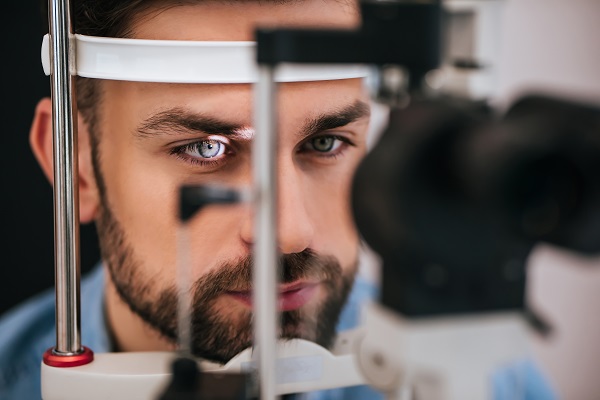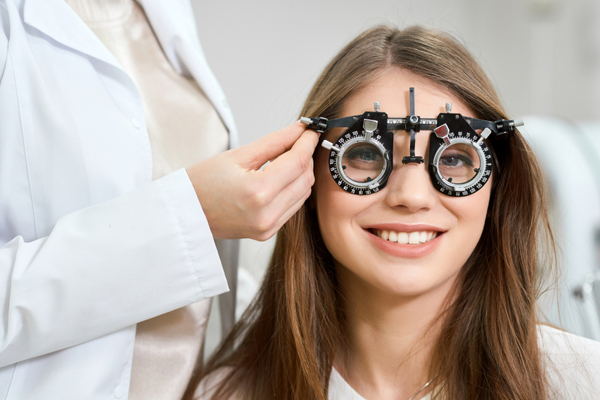Optometrist: Signs and Symptoms of Glaucoma

Glaucoma is a serious condition that damages your eye’s optic nerve. If not treated, it gets worse over time and the damage can cause vision loss and blindness. But, with early treatment, you can protect your eyes against vision loss. Read on to find out the signs and symptoms of glaucoma.
Signs and symptoms
Glaucoma is often associated with an increase in the fluid pressure inside the eye. The increase in pressure may cause gradual optic nerve damage and loss of nerve fibers. Advanced glaucoma can even lead to blindness. Glaucoma develops when the pressure in the eye is too high for a specific optic nerve.
This condition cannot be prevented and vision lost to glaucoma cannot be restored. Early diagnosis and treatment are important. This increases the chances of controlling it before it causes serious problems. The signs and symptoms vary depending on the type of glaucoma.
Primary open-angle glaucoma
With primary open-angle glaucoma, there are no obvious symptoms or warning signs in the early stages. People rarely know they have the condition until the damage is severe. One of the first signs is the loss of side vision. This happens gradually which makes it hard for people to notice the changes.
Acute angle-closure glaucoma
This is a less common type of glaucoma. Some symptoms include nausea, severe eye pain, seeing colored rings around lights, blurred vision, vomiting and eye redness. This type of glaucoma is an emergency condition in which vision loss can occur rapidly. Optic nerve damage may start in a few hours and if not treated within some hours, it can cause severe permanent vision loss or blindness. A person should see an optometrist immediately if any of these symptoms are experienced.
Normal tension glaucoma
With this type of glaucoma, a person has eye pressure that is within the normal range. The cause of this type of glaucoma has not yet been determined. Some of its signs are damage to the optic nerve and blind spots. In this case, optic nerve damage happens even though eye pressure is within normal levels.
Secondary glaucoma and other things to watch out for
Symptoms may depend on what is causing a person’s pressure to rise. People can see halos because of inflammation inside the eye. Bright lights may bother the eyes. Secondary glaucoma is usually a side effect of another eye condition or disorder or an injury. It may also be caused by particular medicines.
Some eye injuries such as retinal detachment or corneal edema may hide the symptoms. Sometimes, a cataract can lead to the development of glaucoma. In such a case, the vision will have been worse for some time. If a person has an advanced cataract, an eye injury or inflammation in the eyes, an optometrist may look at the eye to determine whether a patient also has glaucoma.
When to seek medical help
A person should visit an optometrist if the eye is red and painful. This may indicate that a person may have acute narrow-angle glaucoma, an infection, inflammation or another serious eye condition. If a person feels tired, gets drowsy or experiences shortness of breath after using eye drops to treat glaucoma, it may mean that the drug is aggravating a lung or heart problem. If you experience or notice any of the symptoms of glaucoma, you should contact your optometrist immediately. This increases the chances of glaucoma being detected and treated early before the disease causes permanent damage.
Request an appointment here: https://brighteyesmv.com or call Bright Eyes Optometry at (914) 668-1429 for an appointment in our Mt Vernon office.
Check out what others are saying about our services on Yelp: Glaucoma in Mt Vernon, NY.
Recent Posts
Emergency eye care is needed if you find yourself dealing with a problem with your eye that causes pain or affects your vision. Failing to treat eye injuries as soon as they are detected can lead to permanent consequences, like reduced vision or blindness. Common eye injuries that require emergency eye care include: Exposure to…
Looking for more information on eye protection? An ophthalmologist knows everything there is to know about protecting the eyes. While there are a few different types of eye care professionals, ophthalmologists are eye care professionals who have undergone additional years of education and training so they can offer their patients both medical and surgical eye…
Controlling myopia at an early age can slow down its progression. This can help prevent yearly upgrades for stronger glasses. Your optometrist can help by offering various treatments. If you want to find out how your optometrist can help control myopia, here are the details.Optometrists use atropine eye drops to achieve short-term myopia control results.…
Another word for an itchy eye is ocular pruritis. It is a common health situation in many people. Itchiness in your eyes is more than enough reason to see an optometrist. Receiving prompt treatment is important in receiving prompt relief. If you want to know what causes an itchy eye and the treatments for it,…



